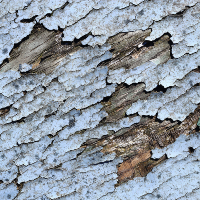6 min read

Less obvious but equally devastating are hidden threats to our health and environment. Two such dangers are asbestos and heat. Over time, they each can cause significant damage to human health or to your home.
What is Asbestos?
Asbestos. Asbestos refers to a silicate mineral found naturally (and therefore mined) around the globe.
The sharp microscopic fibers that comprise asbestos produce a mineral of extraordinary strength. It is nonflammable and noncombustible, with a melting point of 1,600 degrees Fahrenheit. But danger to human health occurs when the tiny fibers become airborne.
Asbestos dominated American manufacturing for over half of the 20th century. It was used across nearly all industries, including the construction of homes, offices, schools, ships, roadways, and more. Its tensile strength, heat-resistance, and insulative properties suggested that it could propel us to new technological and economical heights. However, by the 1970s it was clear that serious consequences of asbestos exposure far outweighed the benefits derived from its use.
Exposure occurs when asbestos-containing materials are damaged or disturbed. Damage may occur simply due to deterioration over time, and renovation projects can disturb asbestos-containing materials that might otherwise remain non-threatening. In either case, the tiny, light fibers are released into the air where they can be inhaled and/or ingested by humans.
What are the Dangers of Asbestos?
According to the CDC, inhalation is the most common route leading to illness. The fibers become trapped in the lungs and over time irreversible tissue damage can lead to grave illness. Less common, ingestion occurs when the fibers are swallowed and enter the digestive system. This may happen when swallowing material removed from the lungs or consuming something contaminated (such as drinking water).
There are several serious or fatal diseases associated with asbestos exposure:
- Asbestosis – extreme scarring of the lungs, causing shortness of breath. This is a serious condition, and it is potentially fatal.
- Lung cancer – appears similar to lung cancers caused by smoking. Because it is most often diagnosed in the later stages of the illness, it is usually fatal.
- Mesothelioma – a very specific type of cancer affecting lungs and digestive tract. Like other asbestos-induced lung cancers, it is usually fatal.
- Pleural thickening – the lining of the lungs thickens and swells, making it uncomfortable and difficult to breathe.
What Should You Do If You Suspect Asbestos?
According to the United States Department of Labor’s Occupational Safety and Health Administration, there are no safe levels of asbestos exposure for any asbestos fibers. If you have any concerns about the presence of asbestos in your home or workplace, contact a trained and certified asbestos professional. You can have peace of mind knowing that your concerns are addressed thoroughly, professionally, and in full compliance with governmental agencies.
Does Heat Damage a Home?
The long, lazy days of summer are perfect for day trips to the beach, picnics with friends, and much-anticipated vacations with family. The landscape is bursting with color under a clear blue sky and the evenings are aglow with the twinkling lights of a thousand fireflies. But when the sun is hot and temperatures soar – especially for extended periods of time – your home is at risk for damage.
Excessive heat can damage the paint on the exterior of your home. The heat can cause paint to bubble, chip, and flake, opening the way for moisture to find its way inside your home. If the condition persists, mold can become established. Once established, mold can cause health problems and can be costly to eradicate.
Roof Damage Due to Sun Exposure
Your roof is another area that is subject to damage from the hot summer sun. Direct, hot sun will cause blistering and cracking on any roof material, particularly asphalt shingles. High temperatures can also lead to the expansion and warping of a roof, leading to cracked shingles that can leak. They can also dry out the caulk around your roof’s flashing and damage your roof structurally.
Decks and Wood Surfaces are at Risk for Sun and Heat Damage
Do you have a deck? Prolonged exposure to heat and sun can cause the wood to become dry and discolored, and the coating will eventually crack and peal. Inside your home, hardwood floors can swell with moisture and even fill gaps under the baseboards. And in extreme temperatures, the flooring can expand too much and cause your floorboards to buckle.
Ways to Protect Your Home During High Temps
Here are some tips to help avoid heat damage to your home this summer:
- Make sure the air ducts in your attic are maintained properly. If you live in a hot, humid area, consider coating and sealing your roof to prevent moisture and/or sunlight from seeping in.
- Inspect the exterior of your home weekly, checking painted areas closely. Consider repainting affected areas with elastomeric paint, which creates a barrier against moisture.
- If you need to sand and re-stain your deck, look for a protective coating product and be sure to strip the current layer thoroughly before reapplying.
- Make regular exterior maintenance of your home a priority. Inspect the roof, siding, and foundation and call a professional if you notice something wrong.
The subtle dangers of excessive heat and asbestos can be managed if you know what to look for. So, stay informed about what to look for, and seek the help of a professional before problems get out of hand. Make this summer memorable for all the right reasons!
Schedule a Remediation Consultation with R1
If you think your home needs asbestos removal or cleanup from storm damage, or your home has damage from the Summer heat, the professionals of Restoration 1 can help you. Our team will carefully remove and clean up an asbestos hazard area and leave the location free of contaminants. Or of you need exterior remediation for heat damage our team is ready! Call us day or night for emergency remediation services.

